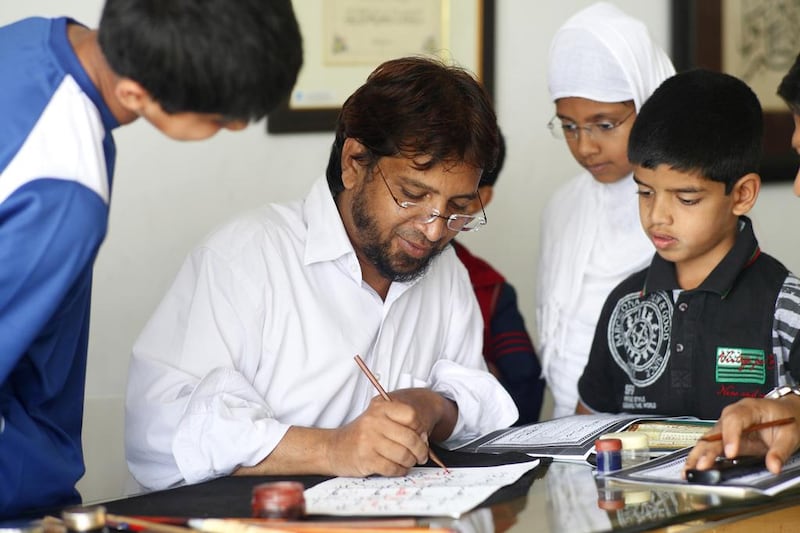Muqtar Ahmed’s Institute of Indo-Islamic Art and Culture in Bangalore offers a pleasing sight every Sunday. From an eight-year-old pupil to a retired 70-year-old gentleman, there is a mix of enthusiastic men and women who look forward to his class on Arabic calligraphy week after week. Ahmed opened his institute to revitalise this dying art in India four years ago with financial and moral support from his mentor Syed Mohamed Beary, a real estate developer in Bangalore. His lessons reach all the way to Riyadh and London, where his online students are based.
Ahmed charges no fee for the lessons. “It’s a tradition all masters follow,” he says. But that doesn’t attract takers. “Learning Arabic calligraphy takes time and effort and offers no immediate results,” he says. Perfecting the art may take up to five years, which is why a lot of people leave midway. “To top that, there isn’t even enough appreciation of the art in India,” he adds.
Years of effort and a bit of good luck have made Ahmed a well-known name in calligraphy. His journey began at the age of 20, when he was introduced to calligraphy by a customer at a cycle shop where he worked as a record-keeper. Just a few months and a short course later, Ahmed became one of the most sought-after writers of wedding cards, and within a few years was employed with Daily Salar, a leading Urdu newspaper in Bangalore, where he wrote the front page, a big achievement for a beginner.
Unfortunately, with computer technology taking over in the 1990s, Ahmed was left jobless. He trawled the internet for options overseas and came across Mamoun Luthfi Sakkal, a Washington DC-based calligraphist who deserves the credit for getting Ahmed international recognition. An introduction to Mohamed Zakariya, a renowned Virginia-based calligrapher, led to lessons being exchanged via snail mail across the Atlantic for four years. Zakariya further guided Ahmed to the Istanbul-based Research Center for Islamic History, Art and Culture (IRCICA), one of the most sought-after institutions to pick up calligraphic skills.
Today, Ahmed is the only Indian to have obtained an ijazah from IRCICA, a third-level diploma equivalent to a master’s degree in Nastaliaq, a calligraphy style. His art is displayed in mosques, living rooms and even private jets. He has created exquisite pieces of art for clients across the world in collaboration with Sakkal. Exhibitions at Abu Dhabi, Sharjah, Madina, Malaysia and Algeria have displayed his work. In 2011, the governor of Madina bought his ayath for 75,000 rupees (Dh4,447). One of his creations fetched him a sum of 65,000 rupees (Dh3,854) in Sharjah. He is currently working on an ayath for a customer in the UAE.
But Ahmed’s heart lies with the resurrection of calligraphy in India. He believes that the well-heeled Muslim community can help the artists pursue a passion supported by Islam by providing financial support. “One day I hope to see a long list of invitations from international exhibitions to the well-known calligraphers of India,” he says.
[ artslife@thenational.ae ]





